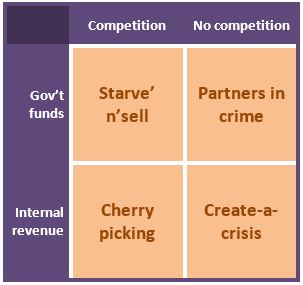Economics is often associated with numbers. We are bombarded with economic data: GDP, unemployment, inflation, debt, exchange rates, market indices…the list is seemingly endless. While many of these numbers change – we are encouraged to cheer when they rise, jeer when they fall – there are others that are presented as fixed, immutable boundaries between good policy and bad. These are magic numbers that aspire to reduce economic policy decisions simple rule-following. Upon closer inspection, the magic of these numbers may turn out to be nothing but pixie dust. Breaking the illusion, however, risks a real mathematical headache.
Last week, another nail was applied to the already tightly-shut coffin of what had until recently been considered a magic number in economics. In a series of influential papers, Carmen Reinhart and Kenneth Rogoff purported to show that a country’s public debt becomes a sizeable burden on economic growth once it exceeds 90% of GDP. This 90% threshold was used by governments, international institutions, lobby groups and others to create and influence public policy across the globe. Many countries either willingly undertook or were – more or less gently – nudged into undertaking destructive austerity programs to lower debt levels below this magic threshold.
An IMF study published last week indicates that the RR studies, as they’ve come to be called, use a much too short, one-year time-frame to measure the effects of public debt on GDP growth. Taking a longer view is not only much more appropriate, it shows there to be no discernible negative effect of higher public debt on GDP growth – and certainly no clear threshold like that posited by Reinhart and Rogoff. This latest study comes on top of another published last year by graduate students from the University of Massachusetts-Amherst, which uncovered not only serious methodological flaws in the RR studies, but also simple errors in how data was entered into Excel spreadsheets. Together, these errors were responsible for the emergence of such a clear threshold. In short, the accumulated weight of critiques of the RR studies has largely shown these studies to be…to put it bluntly, wrong. The magic 90% number turns out to truly be a conjurer’s trick.

